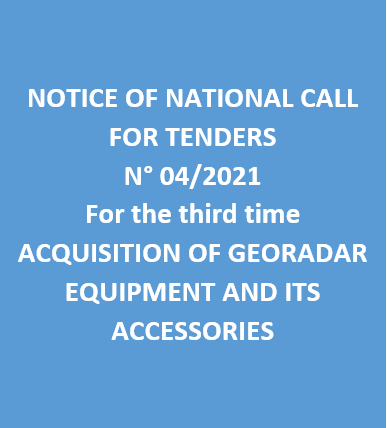| Annual program and technical progress report |
-

Activity Report 2023
-

Technical Program 2024
|
| Geocatalogue |

|
| Invitation to
tender |
-

REALIZATION OF THE TRAINING PLAN FOR THE YEAR 2022
-

ACQUISITION OF TWO SERVICE CARS
-

ACQUISITION OF GEORADAR EQUIPMENT AND ITS ACCESSORIES
|
|
Invest in Tunisia |

|
|
|
|
|
::
Documentation and Editions
>>
Research library
|
| |
|
[
Search by author
]
[
Search keyword
]
[
Search by index
]
[
Search by category
]
|
title of the reference :
|
Progresive neogene deformation of southern Hedil, Tunisian Atlas.
|
|
Publication Date:
|
1980
|
|
Author :
|
Cohen Curtis R., Schamel Steven
|
|
Catalogue type :
|
Livre
|
|
Catalogue reference :
|
Vol.64, N°3 (USA) AAPG Bull. Vol.64, N°3 Progresive neogene deformation of southern Hedil, Tunisian Atlas. Detailed structural mapping in the southern Hédil region of the northern Tunisian Atlas suggests that the area is characterized by multiple-faulted folds, facing southeast, rather than by the nappes and imbricate thrusts of previous interpretations. Our structural analysis shows that major deformation occurred during the middle Miocene (Langhian-Serravallian). This deformation was progressive and occurred in two discrete phases. In the first phase, shelftype rocks of Late Cretaceous-early Miocene age were involved in kink-style folding which developed above a gliding surface in Triassic evaporites to from nourtheast-trending structures. The second phase produced conjugate strike-slip and extensional faulting in these structures. The acute bisectrix of the strike-slip faults, at right angles to the major trends of folding and parallel with the extensional faults, suggests that the maximum principal compressive stress (?1)was directed S38°E and was constant during middle Miocene deformation. This faulted-fold concept contrasts with that suggested in other studies in which the sequence of events is envisioned as faulting followed by folding.
pli ; faille ; compression tectonique ; Néogène ; Tunisie ; Tunisie Nord Occidentale ; Hédil Cohen Curtis R. Schamel Steven Tectonique
|
|
Indexation decimale :
|
Tectonique
|
|
Keywords :
|
pli ; faille ; compression tectonique ; Néogène ; Tunisie ; Tunisie Nord Occidentale ; Hédil
|
|
Summary :
|
Detailed structural mapping in the southern Hédil region of the northern Tunisian Atlas suggests that the area is characterized by multiple-faulted folds, facing southeast, rather than by the nappes and imbricate thrusts of previous interpretations. Our structural analysis shows that major deformation occurred during the middle Miocene (Langhian-Serravallian). This deformation was progressive and occurred in two discrete phases. In the first phase, shelftype rocks of Late Cretaceous-early Miocene age were involved in kink-style folding which developed above a gliding surface in Triassic evaporites to from nourtheast-trending structures. The second phase produced conjugate strike-slip and extensional faulting in these structures. The acute bisectrix of the strike-slip faults, at right angles to the major trends of folding and parallel with the extensional faults, suggests that the maximum principal compressive stress (?1)was directed S38°E and was constant during middle Miocene deformation. This faulted-fold concept contrasts with that suggested in other studies in which the sequence of events is envisioned as faulting followed by folding.
|
|
Exemplaries :
|
TU485A, TU485B
|
|
|
|
|
|
|
|



